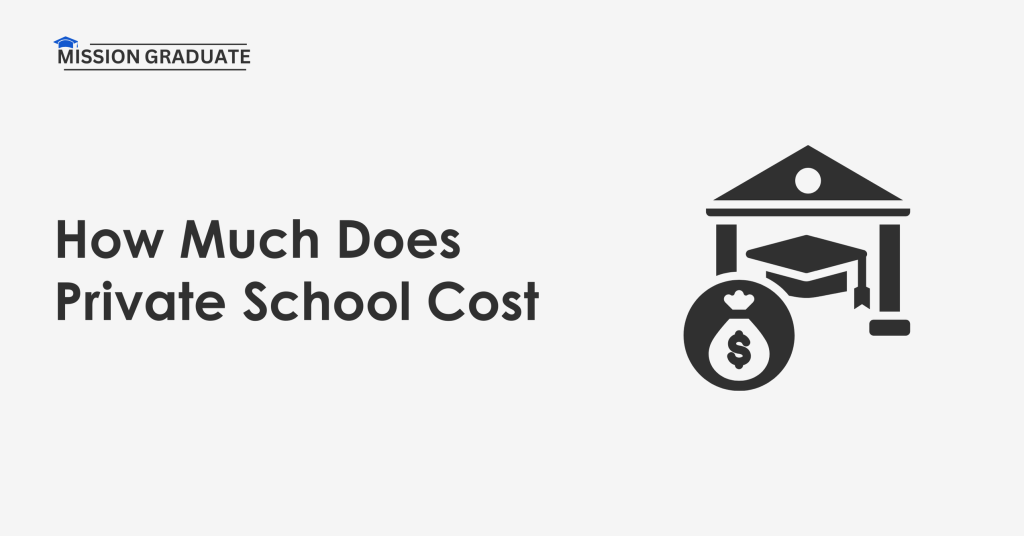By 2025, meditation evolves beyond a wellness trend into a worldwide movement embraced by over 275 million individuals.
In the U.S., middle-aged adults (ages 45–64) are at the forefront, with 15.9% engaging in meditation.
India boasts the largest number of practitioners, at 80.7 million, while meditation applications, such as “Calm,” contribute to a $1.4 billion market, projected to grow to $7.25 billion by 2033.
Women continue to be nearly twice as likely to meditate compared to men. Scientifically, 92% of practitioners engage in meditation primarily for stress relief, and long-term users report reductions in anxiety of up to 60%.
This data-driven overview examines who meditates, the reasons behind it, and its global effects. Let us check it out!
How Many People Meditate In 2025? (Top Picks)
- 275 million people worldwide meditated as of 2025.
- 15.9% of U.S. adults aged 45–64 are the most active meditators by age group.
- Women are nearly twice as likely as men to meditate—10.3% vs 5.2%.
- India leads globally with 80.7 million meditators, followed by the U.S. with 37.9 million.
- 92% of meditators use it for stress relief; 60% reported reduced anxiety after 6–9 months.
- Meditation apps generated $1.4 billion in 2023, projected to hit $7.25 billion by 2033.
- “Calm” earned $7.68 million in in-app purchases in early 2024—#1 among meditation apps.
- Workplace meditation boosted focus for 86% of employees and reduced stress for 82%.
Meditation By Age Group: Who’s Meditating The Most In 2025?
- As of 2025, approximately 275 million people practice meditation. (Source: Mindfulness Box)
- When it comes to meditation in the U.S., middle-aged adults are leading the way.
- Approximately 15.9% of adults aged 45–64 practice meditation.
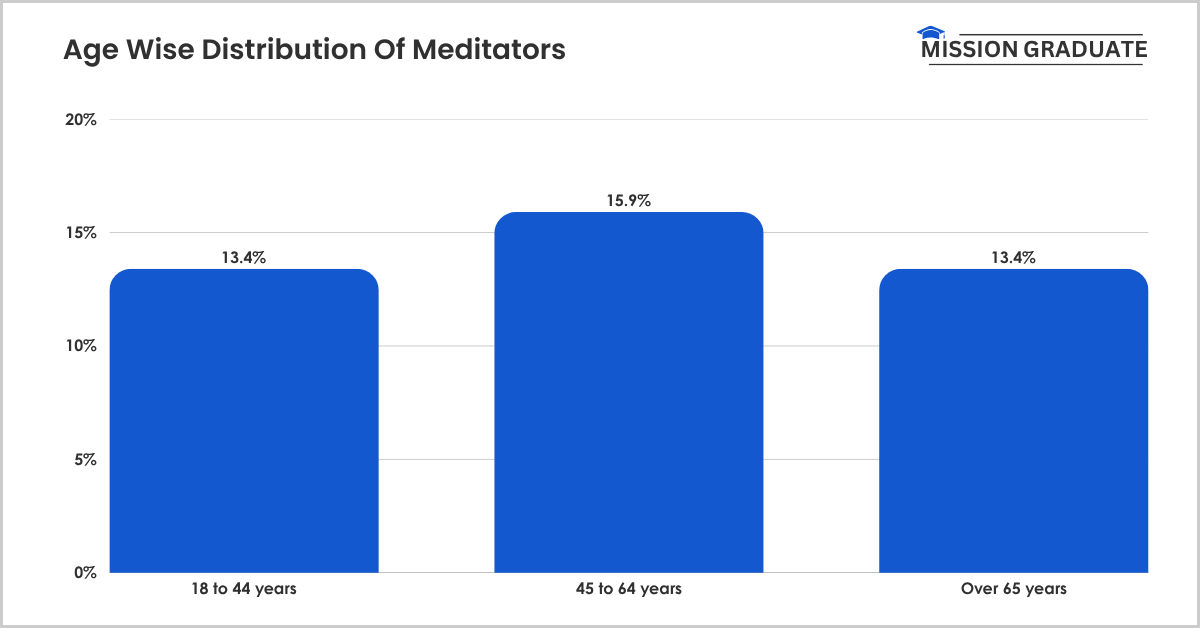
Here’s a snapshot of the age-wise distribution of meditators:
| Age Group | Percentage of U.S. Adults Who Meditate |
|---|---|
| 18 to 44 years | 13.4% |
| 45 to 64 years | 15.9% |
| Over 65 years | 13.4% |
(Source: NCHS)
Gender Differences In Meditation Habits
- Globally, women are nearly twice as likely as men to engage in meditation. Around 10.3% of women meditate, compared to only 5.2% of men. (Source: NCHS)
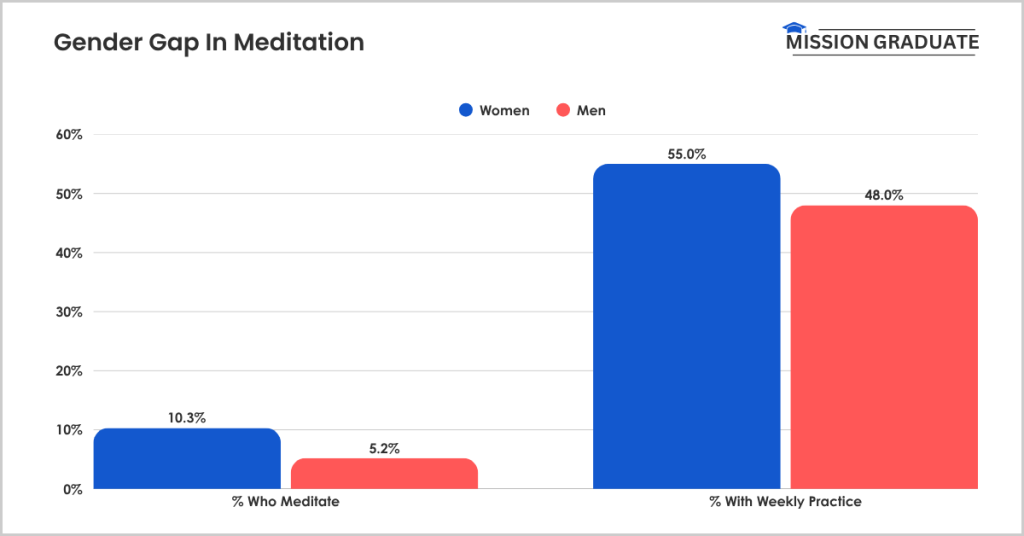
- Around 55% of women say they meditate at least once a week, compared to 48% of men.
- On the flip side, 53% of men report meditating only a few times a year, slightly higher than 47% of women.
These findings indicate that women tend to have a more consistent weekly meditation practice, whereas men are more inclined to meditate sporadically or not at all. Below is a summary presented in table format:
| Frequency of Meditation | Men (%) | Women (%) |
|---|---|---|
| At least once a week | 48 | 55 |
| Once or twice a month | 48 | 52 |
| Several times a year | 53 | 47 |
| Seldom or never | 51 | 49 |
| Not sure / Don’t know | 53 | 47 |
(Source: Yoga Vidya School)
Meditation Usage By Country: Global Comparison
- India has the highest number of meditators, with 80.7 million people. Followed by the United States, with 37.9 million meditators.
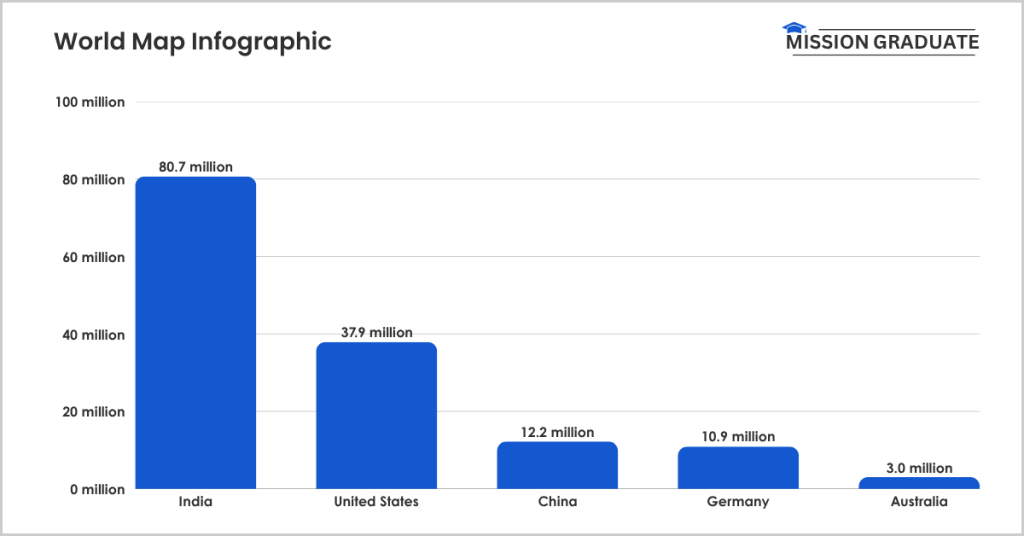
Here are the top 5 country-specific meditation rates:
| Country | Number of Meditators | Percentage |
|---|---|---|
| India | 80.7 million | 8.1% |
| United States | 37.9 million | 18.3% |
| China | 12.2 million | 0.9% |
| Germany | 10.9 million | 15.1% |
| Australia | 3.04 million | 15% |
(Source: Mindfulness Box)
- 18.3% of US adults practiced meditation in 2022 (Source: NIH, Nature)
- 60.53 million people in the USA reported using meditation between 2002–2022 (Source: Nature)
- Non-Hispanic White adults have a higher meditation rate at 15.2%, followed closely by non-Hispanic Black adults at 13.5%. Hispanic adults report a lower meditation rate at 10.9%. (Source- NLM)
- Between 200 and 500 million people meditate worldwide, representing 2% to 6.25% of the global population. (Source: MindWorks, Global Wellness Institute)
Meditation App Market & Usage Stats
- In the United States, nearly 5 out of every 100 health-related app downloads are for meditation apps.
- Meditation and mental wellness apps generated around $1.4 billion globally in 2023 alone.
- This global market is set to grow over five times bigger by 2033, reaching more than $7.25 billion.
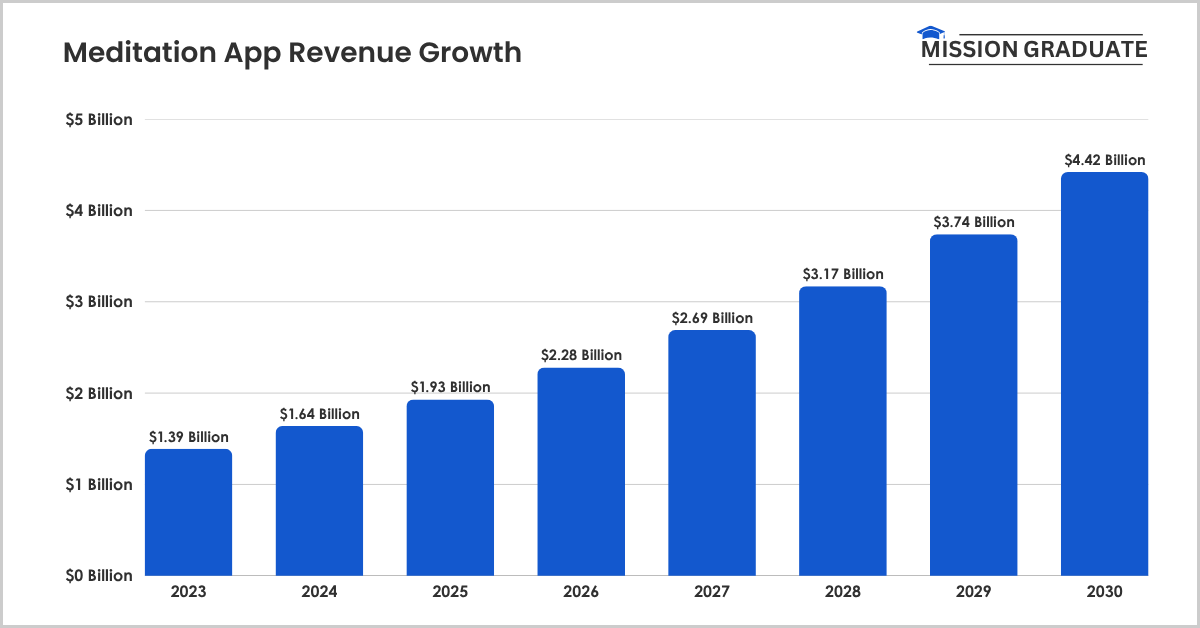
Here’s how the market is expected to grow over time:
| Year | Estimated Revenue (in $ Billion) |
|---|---|
| 2023 | 1.39 |
| 2024 | 1.64 |
| 2025 | 1.93 |
| 2026 | 2.28 |
| 2027 | 2.69 |
| 2028 | 3.17 |
| 2029 | 3.74 |
| 2030 | 4.42 |
(Source- Statista)
- The app “Calm” made the highest revenue, earning close to $7.7 million through in-app purchases in early 2024.
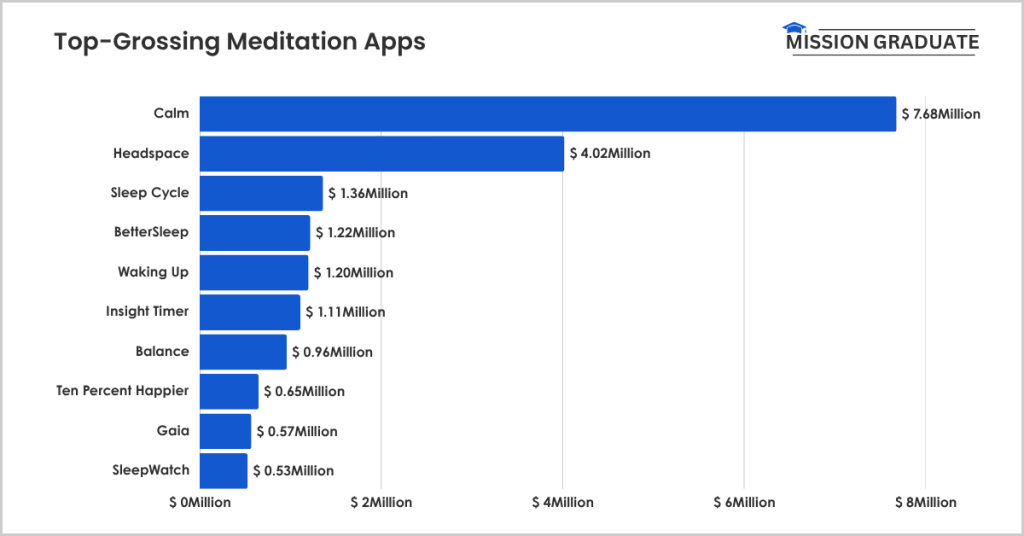
Below is a list of the 10 best-performing health & meditation apps globally based on their revenue in January 2024:
| Rank | App Name | Revenue (in $ Million) |
|---|---|---|
| 1 | Calm | 7.68 |
| 2 | Headspace | 4.02 |
| 3 | Sleep Cycle | 1.36 |
| 4 | BetterSleep | 1.22 |
| 5 | Waking Up | 1.20 |
| 6 | Insight Timer | 1.11 |
| 7 | Balance | 0.96 |
| 8 | Ten Percent Happier | 0.65 |
| 9 | Gaia | 0.57 |
| 10 | SleepWatch | 0.53 |
(Source- Statista)
- Time spent meditating increased by 2,900% among Fitbit users globally since 2020. (Source: Global Wellness Institute)
What Does Meditation Do? [Scientifically Backed Facts]
- While meditating, theta (4–7.5 Hz) and alpha (8–13 Hz) brain waves increase, linked to greater awareness and relaxation (Source: Science Direct)
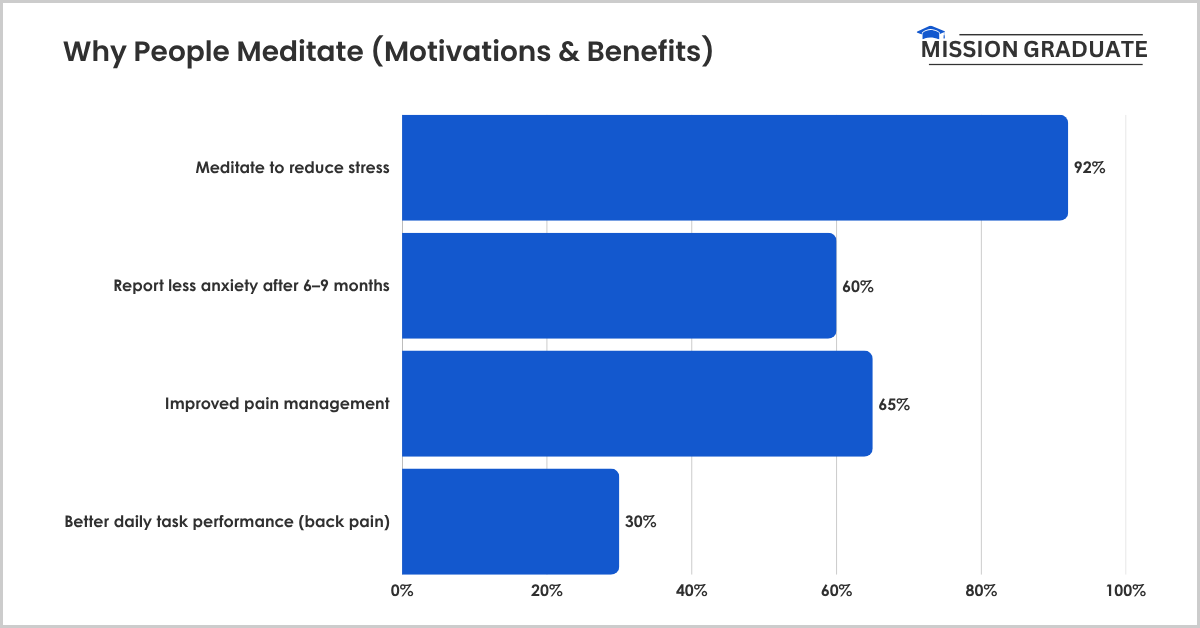
- Meditation induces neuroplasticity, increases cortical thickness, reduces amygdala reactivity, and improves brain connectivity. (Source: NIH)
Meditation Facts (Short-Term Vs Long-Term Effects)
- Brain changes can occur in as little as 8 weeks of meditation training with 20-40 minutes daily practice. (Source: Harvard)
- First-time meditation shows immediate changes in brain wave activity in key regions like the amygdala and hippocampus. (Source: Mount Sinai)
Meditation Effects On Hormonal And Physiological Changes
- 80% of people with hypertension were able to lower blood pressure with meditation, 16% stopped medication entirely.
- Meditation increases telomerase enzyme by 43%, which is needed to delay diseases, including Alzheimer’s. (Source: NIH, Science Direct 2, Mayo Clinic, Frontiers)
Meditation Statistics On Stress Reduction
- Over 92% of people who practice meditation do it to reduce stress or relax. (Source: Pew Research Center)
- Nearly two-thirds of people who practiced meditation for 6-9 months reduced anxiety by 60%. (Source: Nature)
Meditation Statistics On Anxiety Control
- Meditation improves anxiety levels 60% of the time. (Source: Disturb Me Not)
- 25% of meditators experience adverse effects, including panic attacks and depression, particularly those predisposed to mindfulness processes. (Source: Plos)
Better Focus And Memory With Meditation
- 30+ minutes of mindfulness meditation increases gray matter in the hippocampus (learning and memory center) (Source: Nature)
- Four days of meditation practice can increase attention span (Source: NCBI)
Pain Management Related Statistics On Meditation
- 65% of individuals with chronic pain conditions reported improved pain management after adopting MBSR programs. (Source: NCBI)
- Mindfulness meditation helped back pain sufferers improve daily task ability by 30%. (Source: MDPI)
Meditation & Improved Emotional Well-Being
- Meditation reduces depression relapse by 12% (Source: Science Direct)
- 73% of PTSD veterans showed reduced symptoms with mindfulness-based cognitive therapy. (Source: MDPI)
Physical Health Improvements With Meditation
- Meditation can reduce hospitalization risk for coronary disease by 87%. (Source: Disturb Me Not)
- Meditation can reduce the wake time of insomniacs by 50%. (Source: MDPI)
Meditation Benefits For The Brain
- Long-term meditators show greater grey matter density in the prefrontal cortex and hippocampus. (Source: NLM)
- Vipassana meditators show higher degree of connectivity in the right hippocampus in the theta band compared to controls. (Source: NCBI)
Neuroplasticity And Gray Matter Growth
- MBSR enhances brain regions related to emotional processing and sensory perception. (Source: Research Gate)
- Enhanced myelination facilitates faster neural communication through meditation. (Source: Lone Star Neurology)
Brain Imaging Studies
- Loving-kindness meditation alters beta and gamma brain waves in the amygdala and hippocampus. (Source: Mount Sinai)
- fMRI studies show sustained changes in brain activity even when individuals are not actively meditating. (Source: Harvard Gazette)
Suggested Reads:
Meditation in the Workplace: A Growing Trend
- 86% of employees reported that meditation has enhanced their focus and concentration during work-related tasks.
- 82% agreed that meditation helped them manage workplace stress and anxiety more effectively.
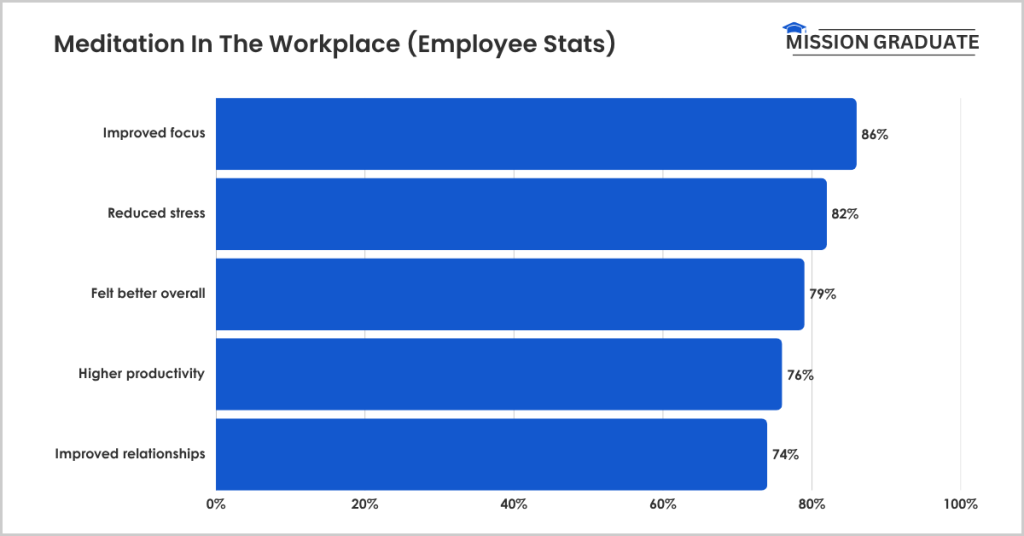
- 79% felt that meditation improved their overall well-being at work.
- 76% stated that integrating meditation into their daily routine led to better workplace productivity.
- 74% observed improved interpersonal relationships at work as a result of meditation (Source: Human Resource Journal)
- Over half of American employers offer mindfulness training to employees.
- The global corporate wellness market, which includes mindfulness programs, is valued at over $50 billion. (Source: HRB)

